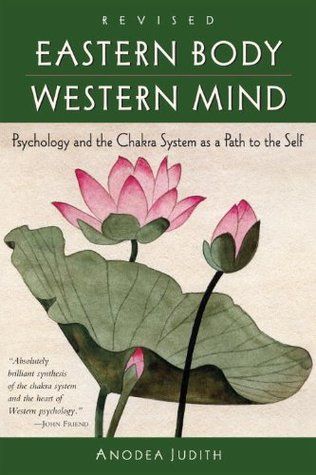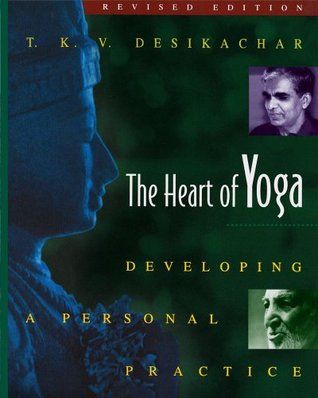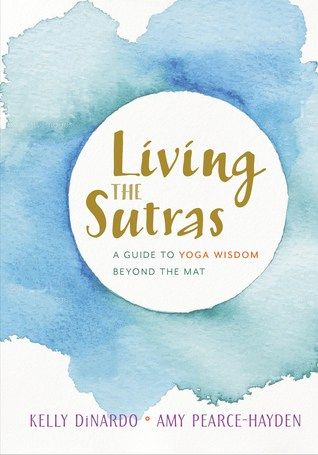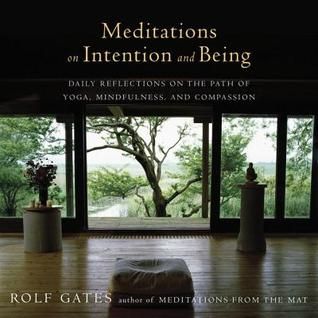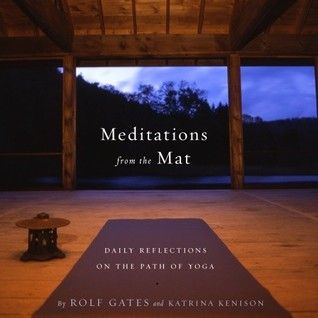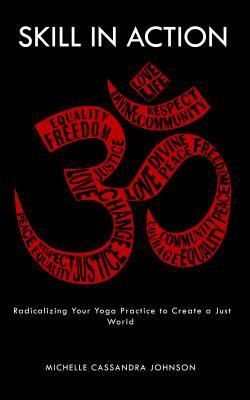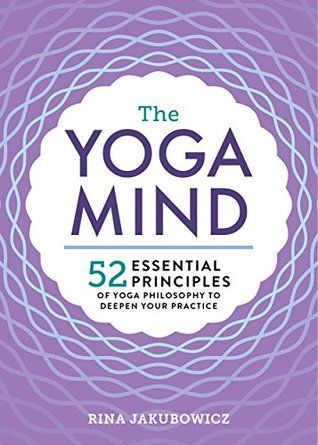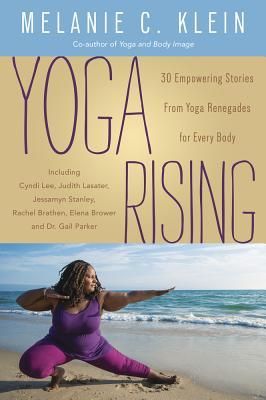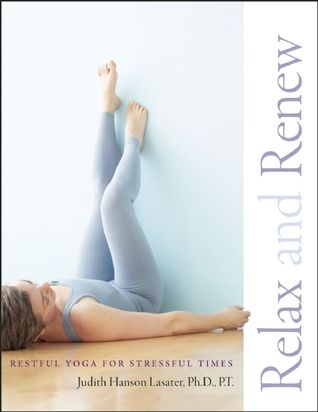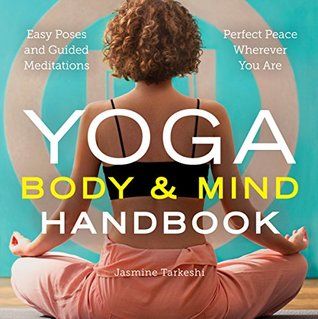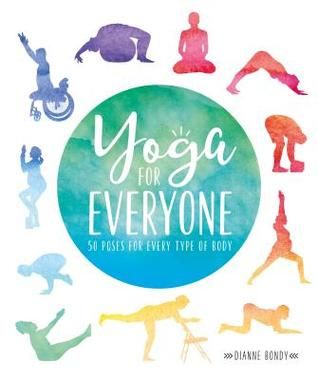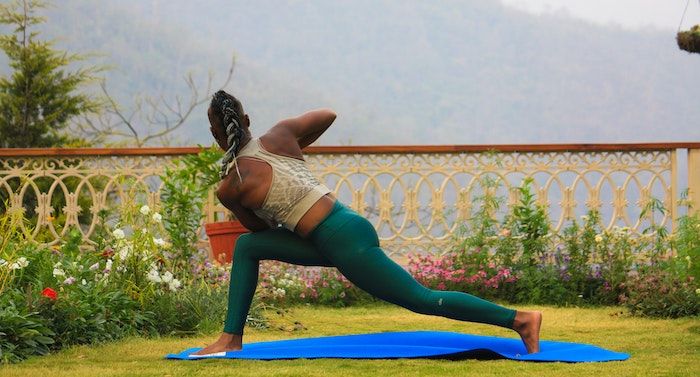
Asana and Beyond: 16 of the Best Yoga Books for Beginners
I make no exaggeration when I say yoga changed my life. I went into the practice hoping for tools to manage my mental health—which required me getting my anxiety under enough control to step into a studio in the first place—and I walked away with so much more. Yoga isn’t just a physical practice, and it was coming to understand that which helped me see how yoga is a whole-life immersive experience. It’s a way of seeing the world, of navigating the world, and of understanding the impact you as an individual have in the greater experience of this thing called life. This can start to sound a little overwhelming, but I assure you that there are so many great yoga books for beginners that finding your perfect experience of yoga is at the tips of your fingers.
My journey into yoga did not begin with books but with videos, and specifically Jillian Michaels Power Yoga. It was a fine place to begin the physical practice, but it did not give me the tools I needed to understand the greater context of yoga.
The best yoga books for beginners, unlike that video or the myriad other videos out there—some of which are outstanding!—root the practice in its historical context. These books not only give insight into how to do asana (the poses) but they highlight yoga’s 3000+ year history. The poses themselves are only about 100 years old, but the philosophies and non-physical practices are so much older.
If yoga in your mind is making shapes, it’s understandable, given how it’s packaged and sold in (white western) media. But that’s not yoga. That’s making shapes with your body.
Yoga is an eight-fold path of practice, with those shapes and poses constituting just one of them.
Dig into these great yoga books for beginners and you’ll see just how much there is to learn, just how incredible the practice is, and how you can be a devoted yoga practitioner, even if you never stand on your head, do a backbend, or have a practice worthy off Instagram likes. Yoga is for everybody and it is for every body. What you see on social media is not what you see in the greater practice.
It’s worth noting that there are many types of yoga. Yoga is a lineage-based practice, and while the foundations remain the same—the eight-fold path—the language, the asana, and some of the modern beliefs behind the practice may differ. My background is in the Iyengar, Baptiste, yin, and super classical tradition (for non-beginners, my training involved Classic Sun Salutations, rarely seen in modern yoga classes). But there are other traditions worth exploring, too, even if they’re not included here.
Something else to keep in mind: if you’re a beginner, do not be intimidated by the poses you’ll see in these texts—or anywhere, for that matter. Yoga poses were created with the 12-year-old male gymnast in mind, and since most of us do not have that body or build, modifications are reality. You are not weak or “bad at yoga” if you choose to use props, to make modifications that help your body find ease in a pose (see my writing on yoga modifications for fat bodies!), utilize a chair for asana, or you choose not to try poses that you suspect won’t feel good in your body for any reason. What makes yoga a beautiful practice is how much you can customize it. The poses in these books are templates, and I encourage you to spend time seeking out ways to make them more accessible.
Also? You don’t need anything fancy to do the physical practice. Use a towel or blanket for a mat. Grab books for blocks. A tie or jump rope for a strap. If you want to invest in special equipment, do so. But do not let the consumerist modern yoga be what keeps you from taking part in a practice with no roots to modern consumption.
One of the master teachers I’ve had the honor of learning from points out that Westerners are addicted to knowing the science behind everything, and while there’s certainly science to back up yoga’s power on the body and mind and that’s addressed in some of these books, I’m not including books that focus entirely on that. A practice isn’t dictated by the why of the benefit alone. It’s defined by what it is you put into it.
The Best Yoga Books for Beginners
Any yoga book can be a yoga book for beginners, but these are meant to give you a foundation from which to build. It’s important to remember your own gut feelings will tell you whether or not the book is for you. Yoga IS for everybody, but the books published don’t always allow that to be made obvious.
Best Classic Yoga Books for Beginners
The Bhagavad Gita
This is a classic Hindu text and there are a number of options when it comes to translation and interpretation available. But to truly understand the roots of yoga practice, it’s a must-read. It’s an epic poem in the form of a conversation between warrior Arjuna and Krishna, the manifestation of God. The dialog is about the lessons Arjuna must learn to change the course of the war he’s about to fight, and the book is brimming with lessons on living well, on making choices, and what it means to live into your true cosmic form.
Light on Yoga by B.K.S. Iyengar
Iyengar sets out the postures, breath work, and mindfulness essential to a yoga practice. It’s comprehensive, and it includes hundreds of images of the physical postures, as well as instructions for pranayama (breath work) to marry breath, mind, and body. Note that the images here will be intimidating for beginners—it’s intimidating to me as an advanced yoga practitioner—and Iyengar himself is hypermobile. Consider the images templates from which to work, as opposed to the be-all, end-all. Iyengar wrote a couple of other essential texts on the practice worth checking out too: Light on Life, Light on Pranayama, and Light on the Yoga Sutras of Patanjali, among others.
The Yoga Sutras of Patanjali by Sri Swami Satchidananda
An essential guide to the practice of yoga’s non-asana work, this book focuses on offering advice and insight for mastering the mind. In this translation, the Sutras—thought-threads—are presented in Sanskrit as well as in English.
The very first Sutra sets up what it means to practice yoga: “If the restraint of the mental modifications is achieved, one has reached the goal of yoga.” This book is one you’ll return to again and again, seeking insight and wisdom from the practice and taking away something new each time. Personally, I find some of the ways these Sutras are discussed or explained to be purposefully humorous in a way that makes the lessons really stick. I think that the Four Keys and Four Locks changed my entire way of interacting with other humans.
Best Modern Yoga Books for Beginners
Yoga’s eight-fold path is laid out in the Sutras, and thanks to that, there are many translations and interpretations of the Sutras, as well as many guides to living and understanding them—some of which are included in the modern texts below.
Eastern Body, Western Mind by Anodea Judith
You’ve likely heard of or seen images representing the chakras and wondered what those were. They’re energies within every body, and Judith’s text explains them perfectly, aligning the eastern philosophies with western psychology in a way that makes ancient beliefs and practices click. Western white ladies love calling eastern philosophy “woo woo,” but this book is a reminder that the things western folks believe in psychology and call scientific actually come from eastern philosophy from centuries ago. These practices have been around a lot longer than western psychology and science. This is a slower read, as well as one you’ll return to again and again.
The Heart of Yoga by T.K.V. Desikachar
Sri Tirumalai Krishnamacharya was instrumental in developing yoga, and his work inspired countless lineages of the practice. This book is the distillation of his teachings and understandings as written by his son. It’s based on the idea of viniyoga, encouraging practices to continually evolve and adapt to each person’s own needs throughout their lives to achieve the best benefits—something that too often can get lost in the desire to achieve a “perfect” asana. Included are poses, meditations, philosophical practices, and more that each person can use to adapt and find their own perfect yoga practice.
The Language of Yoga: Complete A To Y Guide To Āsana Names, Sanskrit Terms, And Chants by Nicolai Bachman
Bachman’s book is a postural guide, but I’m including it in this portion of the guide to books for yoga beginners because it’s crucial to understand that yoga is an ancient practice and even in more modern manifestations of asana, their names are in Sanskrit. This book honors those roots. There are over 200 illustrated poses here, their Sanskrit and English names, as well as chants, sutras, and pronunciation guides.
Living The Sutras: A Guide to Yoga Wisdom Beyond The Mat by Kelly DiNardo and Amy Pearce-Hayden
For those who really want a journaling and meditative practice around the Sutras, this would be a great resource. The Sutras are laid out succinctly and DiNardo and Pearce-Hayden offer excellent reflection space after each. A perfect guide for dipping your toe into where and how you understand the Sutras and their impact on your own life.
Meditations on Intention and Being by Rolf Gates
Many yoga teachers cite Gates’s earlier book—cited below—as a foundational text, but I found this book to be especially moving and powerful. Focused on the ideas of intention and what it means to live your yoga, Gates’s book is broken into 365 short passages that dive deep into the yamas (ethical practices) and niyamas (observances) and where they fit into everyday life, particularly in the West. Gates struggled with alcohol and many of his insights come from the 12-step program and take a wide, global view of living your yoga.
Meditations From The Mat by Rolf Gates
In 365 short passages, Gates explores how one can integrate yoga, mindfulness, and the principals of the practice into every day life. This book would be excellent for seeing the yamas and niyamas in practice (i.e. the lessons of the Sutras and the eight-fold path as they relate to modern western life).
Skill in Action: Radicalizing Your Yoga Practice to Create a Just World by Michelle Cassandra Johnson
A perfect text to counter the cultural image of the thin, privileged white women who practices yoga, Johnson’s book is meant to explore how to use the practice as a radical tool of change. It’s meant to help find liberation for all bodies and gives space for people to find whatever that means for them within their own lives, marrying the tools of change with the deeply radical roots of yoga. Yoga isn’t a practice of complacency. It’s one of being and living change—that’s right there in the Sutras, and Johnson’s book is a refreshing reminder of how yoga isn’t just what you do on the mat. It’s what you do off it.
The Yoga Mind: 52 Essential Principles of Yoga Philosophy to Deepen Your Practice by Rina Jakubowicz
The practice of yoga doesn’t happen solely on the mat, and for some, there is no real mat component to yoga at all. Jakubowicz’s book is a guide to the yoga philosophies underpinning the entire practice, and it’s written in an extremely accessible and easy-to-apply manner. There are 52 practices here and that’s exactly the purpose to the book: the practice.
Yoga Rising: 30 Empowering Stories from Yoga Renegades for Every Body by Melanie C. Klein
It’s nice that there are professional yoga teachers who write books about the yoga life, but what about the average person who enjoys yoga? Where are their stories or experiences?
The answer is right here.
Klein’s book has 30 stories from those who practice yoga and what it is that yoga brings to their lives. What’s essential here, though, is the intersectionality of the stories: contributors talk about body size, ability and disability, race, sexuality, class, age, and so many other points of social challenge they find themselves in and how yoga has been part of understanding, challenging, and living within those worlds. A book about liberating the body through yoga.
Best Physical/Asana Yoga Books for Beginners
Every Body Yoga by Jessamyn Stanley
If you’re going to pick up one book about the physical postures, let it be this one. Stanley’s book offers not just asana, but modifications for different bodies throughout. The models are many different shapes and sizes and showcase how adaptable and incredible the physical practice can be when made to suit the body practicing it, rather than insisting a body conform to a certain posture.
Likewise, Stanley’s own understanding of yoga and how it plays a role in her life will connect with many readers—especially those from marginalized backgrounds.
Relax and Renew: Restful Yoga for Stressful Times by Judith Lasater
If what you want is simply a way to destress and relax, you’ll love this book deeply. Lasater focuses on supported poses that allow you to sink, settle, and completely bliss out. There are sequences in here for short practices, for yoga at your desk, and more.
Yoga Body and Mind Handbook: Easy Poses, Guided Meditations, Perfect Peace Wherever You Are by Jasmine Tarkeshi
Marrying easy yoga poses with meditation, Tarkeshi’s book is an outstanding guide for understanding the ways the body, mind, and breath come together to form the physical practice of yoga. There are step-by-step instructions and the book is designed with the very beginner in mind.
Yoga for Everyone: 50 Poses For Every Type of Body by Dianne Bondy
No matter what your body looks like—whether it’s big or small, whether you have four limbs or fewer, whether you use a wheelchair or not, whether you’re pregnant or face challenges relating to an aging body—this book has 50 poses that are accessible for all. In addition to the poses, there are 10 sequences in the book that weave the poses together, giving every body an outstanding series of movements they can do without needing to figure it out on their own. An empowering essential guide to physical yoga.
Here’s wishing you an incredible start to your yoga journey.
If, along your path, you find yourself eager for every more, yoga’s sister science of Ayurveda can be a game-changer, too. This is the practice of eating for your type, practices for your type, and so much more—it’s not a diet, it’s not a prescription, nor is it meant to do more than help you fuel your individual body in the best possible ways mind, body, and spirit. Dig into some excellent books about Ayurveda here.





